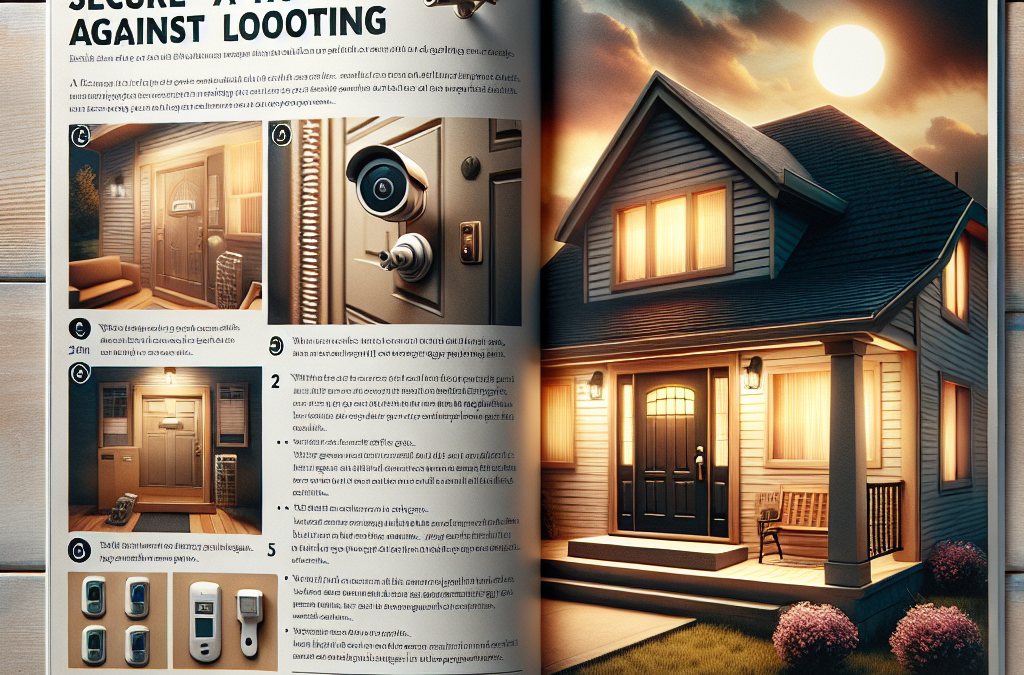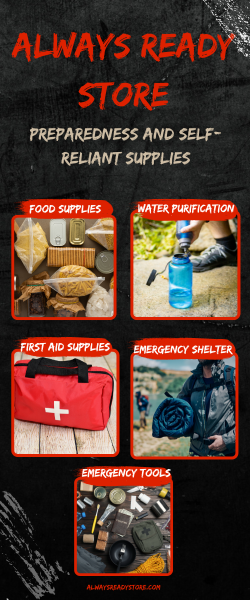Assess Your Home’s Vulnerabilities
Identify Weak Points
In my experience, the first step to safeguarding your home involves taking a close look at its vulnerabilities. Think about the windows that don’t quite lock all the way or the back door that’s seen better days. Walk around your property and jot down anything that feels insecure. A solid game plan starts with knowing what needs to be addressed.
Make a mental note (or write it down, you know what works for you) of areas around your home that might be hidden from view, like the side gate. These spots are prime for opportunistic looters who might think they’re hiding from plain sight. Being aware of your home’s layout is crucial.
Once you’ve pinpointed potential weak spots, it’s time to brainstorm ways to strengthen them. Whether it’s reinforcing a door or improving outdoor lighting, each little step counts and makes your home a harder target.
Consider Your Neighborhood
The environment around your home plays a big role in security. Chat with your neighbors; trusting relationships among those living close to you can create a natural security network. I’ve found that simple conversations can lead to group strategies that involve shared watchfulness, especially during uncertain times.
Pay attention to any upcoming events or issues in the neighborhood that could affect security. Community meetings are a great way to stay updated and share tips for keeping each other safe. I remember a time when our neighborhood banded together over a rumor of increased break-ins; it made a significant difference.
Be aware of your surroundings, too. If something seems off, trust your instincts. Making notes about unusual activity can help you communicate concerns even if they’re shared with local authorities or neighbors.
Thank you for reading this post, don't forget to subscribe NOW for FREE!
Enhance Overall Security
Beyond just locking doors and windows, there’s a wide range of measures I’ve implemented that heighten home security. Installing smart locks or an advanced security system has given my family more peace of mind. I mean, knowing that I can monitor my home from wherever I am really reduces anxiety. Plus, you can set it up so that it alerts you to any unusual activity.
Surveillance cameras have also been a game changer for me. Having eyes on the perimeter of your property not only catches potential threats but also deters them. I’ve noticed that just having visible cameras puts people on notice. It’s like an unspoken warning that your home is not an easy target.
Lastly, I can’t stress enough the importance of regular maintenance checks. Ensure that alarms, cameras, and locks are in good working order. Setting a calendar reminder to do this every few months can mean the difference between safety and an unfortunate event.
Create a Safety Plan
Develop Family Communication Strategies
Whenever a crisis pops up, having a solid plan is vital. I usually set up a comprehensive communication strategy with my family. This entails everyone knowing how to reach each other during emergencies. Trust me, nothing can replace the peace of knowing your loved ones are safe and accounted for.
In addition to that, establish a meetup point outside your home where everyone can regroup if the situation escalates. During a tough situation, sticking to the plan becomes crucial—everyone remains calm, and decisions can be made without panic.
Regularly discuss and practice your safety plan. It may seem redundant, but practicing drill scenarios makes everyone feel more prepared and can save lives if push comes to shove. I’ve learned firsthand that repetition really cements knowledge.
Emergency Supplies Preparedness
When the going gets tough, being prepared with emergency supplies can truly be a lifesaver. From basic stuff like food and water to medical kits, I took the time to put together comprehensive kits that my family can easily access during a crisis. Keeping an eye on expiration dates is crucial; no one wants to rely on expired supplies.
Besides food and water, consider including items such as flashlights, batteries, and even a portable phone charger. During my own experiences, I found that a reliable power source can make navigating through dark times much easier.
Lastly, it doesn’t hurt to have copies of important documents stored in a safe place at home, or even better, in a digital format. This can include insurance documents, identification, and property titles. It may seem trivial, but having easy access to these details can be the difference in recovery efforts.
Know Local Emergency Services
I can’t stress this enough: knowing your local emergency services can create a crucial lifeline during crises. Familiarize yourself with local police, fire stations, and emergency numbers—not just for your own sake, but for everyone around you. It’s always useful to have this information easily accessible.
I also recommend building relationships with local law enforcement. Previously, I attended community events where officers interacted with residents, which helped me learn their approach in emergencies. Having a rapport can lead to quicker response times when seconds matter.
Ultimately, don’t hesitate to reach out to these services during emergencies. They’re there to help, and many times, they can provide immediate advice on securing your home during a crisis. A little bit of knowledge can go a long way in ensuring your home’s safety.
Secure Your Home Before Crisis Strikes
Install Effective Locks and Reinforcements
Once I started thinking more seriously about home security, investing in sturdy locks became my first move. Simple deadbolts provide a good level of security. But consider upgrading to smart locks; they offer more flexibility, especially when you’re away and want to control access remotely.
I also noticed reinforced doors and windows can deter break-ins significantly. Installing window security film makes panes harder to break through, which delays any potential looters. It’s like an extra layer of armor for your home.
The improvements don’t stop at the doors and windows. Secure sliding doors with rod-style locks or have them fitted with extra locks for good measure. It’s the little things that stack up and create an incredibly protective environment for your family.
Landscape for Security
Surprisingly, how you landscape your yard can have a significant impact on home security. From my experience, maintaining low shrubbery and sparse trees around your home creates a clear line of sight for neighbors and security cameras. Thieves prefer to hide in overgrown areas, so keeping your yard tidy can help dissuade them.
If you can, consider planting thorny bushes near windows and entry points. Not only do they add a natural deterrent, but they also maintain your home’s aesthetic appeal without making it feel like a fortress. I’ve always found that balance between security and a welcoming home is essential.
Lastly, good lighting plays a critical role. Plenty of outdoor lights, especially motion-sensor ones, can disorient unwanted visitors. When landscaping, make sure you’re not blocking those lights with high hedges or trees.
Join or Form a Neighborhood Watch
If there’s one thing I’ve learned, it’s the power of a community. Joining a neighborhood watch is one of the best ways to improve the security of your area. When more people keep an eye out for peculiar activity, it creates a sense of collective responsibility for safety.
Add regular community meetings or just simple get-togethers where you can talk about concerns or observations you’ve made in the area. I’ve found that knowing who lives near you and having shared strategies makes us all feel more secure.
Moreover, consider creating a communication platform with your neighbors. Whether it’s a group chat or an email list, staying in the loop can be the key to acting quickly when issues arise.
Maintain a Low Profile
Control Visibility of Valuables
When it comes to home security, I always remind myself less is more. Avoid making it obvious that you have valuable items at home. That huge flat-screen TV in the living room? Maybe consider minimizing the drapes or curtains so they don’t scream “look at me!” when you’re not at home.
It helps to think about what you throw in the trash, too. Packaging from expensive gadgets is often a giveaway to potential thieves. Instead, find ways to disguise those items when you dispose of them. Keeping a low profile can be one of the heaviest hitters in security.
Also, think about your online presence. While social media is great for sharing life highlights, posting photos or statuses about your latest purchases or vacations can inadvertently advertise your valuables to the wrong audience. I know it’s tempting, but exercising a bit of caution is always wise.
Use Smart Technology Wisely
In a world where technology is king, I’ve found integrating smart devices into home security is a game changer. From smart cameras to home automation systems, there are plenty of options available to enhance your home security. These devices keep me connected to my home no matter where I am.
For instance, smart doorbells with cameras allow you to see who’s at your door without ever leaving the couch. Pair that with remote locking and unlocking features, and it almost feels like you’re there, even when you aren’t. That capability is priceless when it comes to security.
However, remember to use smart technology wisely. Ensure you’ve secured your Wi-Fi network, as overly connected devices can introduce vulnerabilities if not protected. Investing in cybersecurity measures is just as important as physical security for today’s homes.
Practice Everyday Vigilance
I’ve learned that security is an ongoing commitment. I make it a point to lock doors and windows, even when I’m home, to keep those habits firm. It’s easy to slip into a routine, but staying vigilant is vital, especially during uncertain times.
Keep an eye on your neighborhood, looking out for anything odd or out-of-place. I often encourage my friends to take note of their surroundings while walking or driving. A little awareness can go a long way in prevention.
Lastly, trust your gut feelings. If something feels off, don’t hesitate to reach out for help, whether that’s calling local authorities or just asking a neighbor for heightened vigilance. It’s in these simple actions that we cultivate a safer community.
FAQs
1. How can I identify vulnerabilities in my home?
You can identify vulnerabilities by walking around your home and examining all entry points—doors, windows, garages, and sheds. Look for wear and tear, and consider areas that aren’t visible to passersby, as these can be attractive to thieves.
2. What should be included in an emergency supply kit?
Your emergency supply kit should include non-perishable food, bottled water, a medical kit, batteries, flashlights, and a portable charger. It’s also wise to have sanitation supplies and essential documents on hand.
3. Is it worth installing a home security system?
Absolutely, a home security system can be a strong deterrent against crime and provides peace of mind. Look for options that allow remote monitoring and response features for added security when you’re away.
4. How can landscaping help with my home security?
Good landscaping reduces hiding spaces for criminals and enhances visibility around your home. Keeping shrubs low and well-trimmed helps neighbors and passersby keep an eye on potential threats.
5. What role does the community play in home security?
The community plays a significant role in home security through shared vigilance. Neighborhood watch programs or simple connections with neighbors create a network that can monitor and respond to suspicious activities effectively.






